- Home
- Peter Ackroyd
Thames Page 3
Thames Read online
Page 3
It is worth considering that, when you set out upon the river, you become in some way detached from the mundane world. That world becomes more remote, as if in passing from land to water you had crossed some other boundary. The feeling is akin once more to that of being “suspended.” It may be that you have passed into a different time, or at least a different sense of time. For some, of course, the joy of entering the river is the sensation of “escaping” from time altogether. By general consent those who dwell by the Thames tend to be fatalistic, resigned to the wayward nature of the river and its sudden or occasional irruption into their lives. They, too, have become habituated to another level of time and transience.
Yet time twists. The river winds and meanders. The spirals within the current are a token of temporal turbulence, reaching from the surface to the deep water of the river-bed. The river elongates time. Those who wander by the tow-path live in a different time from those who pass in a car or train across the bridge. The river informs us that there are many zones of time. By winding so crookedly, northward and westward, it is in peril of losing itself in the labyrinth of its own making. At Penton Hook, between Chertsey and Staines, the river takes half a mile to travel a total distance of 20 yards (18 m). The watch or clock is useless here. By Blackwall the Thames crosses the meridian three times, an apt token of its waywardness.
The river is ever flowing but of course it is not eternal. It will cease, at that moment when the world itself ceases. But to human perception it is the closest imaginable approximation to everlasting process. In “The Brook”(1853) by Tennyson it is invoked in terms of eternity:
For men may come and men may go,
But I go on for ever.
But this sentiment may provoke unease. The river ran before the creation of humankind, which has been endlessly contending with it from the earliest times—fording it, bridging it, riding it, harnessing it, damming it, diverting it, with the unspoken knowledge that the river will in the end persevere against any and every obstacle. It will always run.
The fourth Duke of Queensbury, known as “Old Q,” grew tired of watching the Thames from his house at Richmond. “What is there to make so much of in the Thames?” he asked. “I am quite weary of it, there it goes, flow, flow, flow, always the same.” Longfellow wrote that on the broad river “the slow years sailed by and ceased to be.” Those who know the Thames well adopt a leisurely pace. The years are often said to “roll by” in implicit deference to the river. There are stretches where the water seems to move reluctantly. The Industrial Revolution passed by the Thames, and industry did not arrive upon its banks until after the First World War. There are still traces of archaic village life in the settlements beside the Upper Thames. Some villages—Lechlade and Cricklade, for example—seem to be preserved in their old age as if they were in implicit communion with the river that has always served them. Kenneth Grahame, the creator of Thames mythology in The Wind in the Willows (1908), remarked of one river village that it possessed a “holy calm” and a “natural life of somnolency” the wanderer by the river-bank is in turn a “loafer” and “through golden spaces of imagination his soul is winging her untrammelled flight.” That is for many the natural occupation of the river-wanderer, set free from the world of days and hours in order to soar among dreams. Those who dream by the river may dream of the future as well as of the past.
Yet it is hard to determine, in the life of the Thames, what is the beginning and what is the end. The concept of the hydrologic cycle, from sea to river, and from river to sea, poses a problem for those who exist in linear time. Can the Thames ever be said to really end? And, if so, where does this “ending” take place? Its end, theoretically, is the point at which it begins again. While it is continually going forward, it is also going backward. Isaac Rosenberg said of Stanley Spencer, who painted the Thames at Cookham on many occasions, that “his pictures have that sense of everlastingness, of no beginning and no end, that we get in all masterpieces.” It may be that Spencer was imbued with this quality of “everlastingness” by his life near the river. Spencer painted the images of biblical antiquity in the setting of the twentieth century. And the endless life of the Thames suggests that the nature of all things is inherently cyclical.
That is why the future of the river was often described in terms of its primordial beginning. Shelley once prophesied that “the piers of Waterloo Bridge shall become the nuclei of islets of reeds and osiers, and cast the jagged shadows of their broken arches on the solitary stream.” In Richard Jefferies’s dystopic fiction, After London (1885), the future Thames is depicted as “a vast stagnant swamp.” In dreams of the future the Thames is often depicted as reverting to some primitive state, with the supposition that somehow it has always remained primitive. The river contains its beginning within its end. The historian, Thomas Babington Macaulay, conjured up the spectre of a fallen world with “some traveller from New Zealand…in the midst of a vast solitude, taking his stand on a broken arch of London Bridge to sketch the ruins of St. Paul’s.” Here the river is a setting for some antique, almost primaeval, world of fallen stone.
If it seems to challenge the concept of time, it seems also to pose questions about the relation of time and space. Is the contingent space—the bank, the source—an aspect of the river’s flow? Can the river be said to have a spatial context at all since it is in continual free flow? Would it be possible, for example, to make a transparent sculpture of the river as it is at this precise nano-second? It would be a thing impossible. So what is its body? How do you recognise and determine its volume?
William Morris owned two houses by the river. One was called Kelmscott Hall, in Hammersmith, and its garden ran down to the Thames. The other was in the village of Kelmscot (the true spelling), near Lechlade, where the land ran down to the same river. Morris enjoyed contemplating the fact that the water which ran under his window at Hammersmith had already passed the meadows and the grey gables of his country house. Space here itself seems to become fluid, infinitely impressionable. For Morris the two spaces, more than 100 miles apart, partake of the same enchantment. That may be why the writers and dreamers on the river, such as Lewis Carroll, always have a curiously malleable attitude towards spaces and places. They make them infinitely small or infinitely large.
But was Morris really correct in believing that it was the “same” water at Hammersmith and at Lechlade? There is a case for saying that the water of the river is everlastingly new, fresh and ever renewed. There are some curious physical facts to bolster the metaphysical argument. The Thames from Lechlade to Teddington, what can be called the non-tidal Thames, contains approximately 4,500 million gallons (20,450 million litres). The amount of rainfall in that region has been calculated as 4,360 million gallons (19,820 million litres). It is new water, perpetually circulated, perpetually purified, perpetually replenished. But another curious statistical fact will cast a strange light on this “newness.” One drop of water, fallen in the Cotswolds, will have been drunk by eight different people before it reaches the sea. It is taken out, purified, and then reintroduced to the river. It can never be quite the same as it was yesterday, or last month, or a hundred million years ago. Or can it? It is the secret of its eternal renewal.
The true measure of the river may be found in the emotions that it summons up. For some who gaze upon it or wander beside it, it conjures images of their destiny, while for others it invokes the past. There are few people who do not enter some form of reverie when they sit by the flowing water, even if it lies only in the recognition of perpetual change. That is why, in books concerning the Thames, there is a continual lament about the encroachments of the present on the glories of the past. The Thames itself summons up this mood of regret.
Thomas Gray set the tone for river melancholy in his poem, “Ode on a Distant Prospect of Eton College” (1742). Once more the recognition of endless change induces sadness. Turner’s paintings of the Thames are often concerned with embarkation, separation and withdrawal. In
Dickens’s novels the Thames is often the scene of meetings and partings. Water is the melancholy element. Everything is dissolved within it. There are people who come to the banks of the river in order to experience forgetfulness. The sight of the river can obliterate thought, and kill observation. It can even erase memory. It absorbs everything. It can induce sleep and oblivion, as well as contemplation. The river Lethe still exists within the river Thames.
Yet the idea of the cycle, and of perpetual rebirth, may also be the cause for celebration. Even now it can provoke feelings of escape and of adventure. There is always something waiting to be explored around the next turn of the river. When the Thames rushes out towards the sea it seems to be filled with new life and energy.
PART II
Father Thames
CHAPTER 4
Baptism
Thames is an old name. With the exception of Kent it is perhaps the most ancient name recorded in England. It is assumed to be of the same origin as that of the rivers Tamar, Teme and Taff; they may all be derived from Celtic tam, meaning smooth or wide-spreading. Isa or esa are both versions of a Celtic root word meaning running water, as in the present Ouse and Exe (Oxford is a corruption of Ousenford or Osenford). So we may construct a provisional translation for the Thames as running ooze. But this is merely informed supposition. The word may have another origin altogether. There is a river Temes in Hungary that flows into the Danube. There is a river Tamese in Italy, and the principal town of the Brutii in southern Italy was called Temesa.
There is also a tributary of the Ganges, known in Sanskrit as Tamasa. It derives from Sanskrit tamasa, or “dark.” In the second book of the Hindu text Ramayana there is a chapter on “The Tamasa.” So the name could be pre-Celtic. It may spring from the primordial tribes of the Mesolithic or Neolithic periods who, during their wanderings over the earth, shared a common language. The syllable teme may indeed indicate darkness, in the sense of holy or sacred fearfulness. It may be very ancient indeed, going back to the first naming of the world. It is a matter of interest, then, that in the nineteenth and early twentieth centuries the Thames was often described as the “dark river” in unwitting echo of its first description.
Perhaps it was not renamed, by the Celts or the Romans or the Saxons, because it was considered to be a numinous word. The river was known to the Celts as Tamesa or Tamesis. The Romans, in the shape of the conqueror Julius Caesar, translated it as Thamesis. This was also the name known to Tacitus and Dion Cassius. For the settling Saxons it became more simply Temes or Temese. The fact that it retained its final “s,” a rare occurrence in Anglo-Saxon, suggests very strongly that the Saxons knew the word already before its Celtic or Roman vesture. They had heard of the Thames as a great river over the seas. In a manuscript of 699 it is called “Thamise.” For Nennius, in his chronicles of the eighth and early ninth centuries, it is “Tamisia.” The name has no less than twenty-one variants in its Latin and Saxon forms, with a further nine in Middle English. But without exception they include tame or teme. This is the sacred element—this putative word for darkness.
It soon enters chronicle history, within the ancient charters of the Anglo-Saxons. In the first of them extant, from the seventh century, there are references to land belonging to Abbot Aldhelm “cujus vocabulum Temis juxta vadum qui appelatur Somerford.” Somerford Keynes still exists beside the Thames, no more than 2 or 3 miles from the source; it has a church built by Aldhelm himself (with a Viking carving) and the vestiges of Saxon watermills.
The baptism of a river requires the figure of a guardian or deity. Ludd, Celtic divinity of the Londoners, a mysterious and insubstantial god, may be related to Nudd or Nodens, who is the presiding deity of the Severn, but on these curious matters no certainty can be found. There is a more rotund figure in the form of Old Father Thames, a water divinity of unknown origin who bears a striking resemblance to the tutelary gods of the Nile and the Tiber. His flowing beard and hair call up the strange association between hair and water. The Ganges was supposed to flow through the matted hair of Shiva; in Leonardo’s notebooks there are drawings of hair and water that have been closely aligned, as if in the swirls and ripples of the water there was an echo of human organism. A Graeco-Roman sculpture of the Tiber, with flowing beard and hair, is dated from the first century BC; it is to be found at the base of the staircase of the Capitoline Hill in Rome. In the same setting reclines the god of the Nile, with similar appearance and pose.
In the myths of Greece and Rome Achelous, the god of all rivers, is also the fount or source of all knowledge. He mourned the loss of one of his horns in combat with Hercules. That became the “horn of plenty” which in turn was transformed into the urn held by Father Thames; this can be construed as an expression of the fact that the river, once tamed, becomes fruitful. Yet the images also suggest other attributes. Achelous is a strong god, who can be tempted to fierceness and anger. He is ancient but he has the gift of perpetual self-renewal so that he holds within himself the secret of eternal youth. That is the origin of the “fountain of youth.”
His avatar, Old Father Thames, is commemorated in a statue, once at Thames Head but now removed to Lechlade, the site of the first lock upon the water. He is here surrounded by barrels and bales of goods, in homage to the Thames as a river of commerce as well as sacred power. He also carries a spade, as an emblem of the industry required to create the locks that have in part tamed the water. There is another sculpture in the grounds of Ham House, beside the river, where it is known simply as “the river god” this is from the mid-eighteenth century, a hundred years older than the image at Lechlade, and the god holds an urn in homage to a more ancient sense of sacredness. Other copies have been lost.
There is a sculpture of Father Thames in Trinity Square, where it acts as genius loci for the erstwhile headquarters of the Port of London Authority; the god carries a trident and, with his other hand, points eastwards towards the open sea. Once more his beard and hair are carefully detailed. He surmounts the emblems of Produce and Exportation, Commerce and Navigation. There is a bronze figure of Father Thames in the courtyard of Somerset House, and on the Strand front of that building there is a keystone carved in his image. There are great sculpted heads of Father Thames at the river entrance of Hammersmith Town Hall, and upon Vauxhall Bridge there is a bas-relief of the god in combat with the creatures of the deep. There is an image upon Kew Bridge, and another upon the bridge at Henley where his hair and beard are surrounded by bulrushes and fish. So he has not altogether been forgotten. He is still the deity revered by one of the great celebrants of the Thames, Alexander Pope, who described his
…tresses drop’d with dews, and o’er the stream
His shining horns diffus’d a golden gleam:
Grav’d on his urn appear’d the moon, that guides
His swelling waters, and alternate tides.
The poetry of John Denham in “Cooper’s Hill” was once considered to be the purest in the language, as smooth and as mellifluous as the river that he invoked. He also paid homage to its deity as “Thames, the most loved of all the Ocean’s sons.” It would seem, then, that he comes from an old and distinguished family. He has a companion, however, who may claim even greater age and distinction.
The god of the Egyptians, Isis, has been generally associated with the Thames. The river itself has indeed been compared with the Nile, perhaps because of its fertility and its central place in the kingdom through which it flows. Sacrificial victims were thrown into the Nile to appease its deities; we will find the same rituals beside the banks of the Thames. There are reaches of the Thames that effortlessly summon up memories of the Nile. A stretch of the river just before Cricklade contains rushes and quicksands; a dreamy and melancholy passage of water at Chelsea has been compared to the Egyptian river. More importantly, however, the Nile and the tidal Thames contain intimations of death and rebirth, and of perpetual resurgence. They are both considered to be dark rivers.
One of the most famous mon
uments by the river must surely be that known as Cleopatra’s Needle, although the obelisk has only a slender connection with the famous queen. But it does, however, have some association with the Nile. It was created by the pharaoh Thutmose III, and for fifteen hundred years it stood at Heliopolis beside the east bank of the Nile. It was transported to the Thames in 1878 and set upon the bank by means of hydraulic power. Its pink granite, quarried at Syene, has been blackened by the fogs and smoke of London. It is now the same colour as the river itself, a hallowed token of the turbid and mysterious Thames.
The connection between the Thames and the Nile is first made in the Polychronicon, or “Universal History,” of Ranulphus Higden, monk of Chester, who lived in the first half of the fourteenth century. In that compilation of medieval learning Higden writes that “Tamisia videtur componi a nominibus duorum fluminium, quae sunt Thama et Ysa aut Usa.” Thus in translation: “Thamesis seems to be composed from the names of two rivers, that are the Thama and the Ysa or Usa.” It is more than probable that the Ysa and Usa of Higden’s account are in fact from the Celtic isa or esa. In the fourteenth century, then, the people along the banks of the river knew it from its Celtic term. Perhaps it was always known as the Ysa.
But then the historical record works its own recondite miracle. It was easy enough for Ysa to become the resplendent Isis. The error was promulgated by John Leland in his Itinerary (1546) where he announced that “Isis riseth at 3 myles from Cirincestre.” William Camden, in his Britannia (1586), uses the same name in a record of “Isis vulgo Ouse” or “Isis, commonly known as the Ouse.” It was without evidence or corroboration but it proved remarkably suggestive. The same explanation was followed by Holinshed and Stow. Such was Leland’s prestige, in fact, that no one cared to dispute it. In the late seventeenth century, for example, the Welsh scholar, Edward Lhwyd, followed Leland as one “against whom I dare not contend.” So in Parochialia (1695) he writes of Dorchester as the place “neere where the Thames dischargeth himself into Isis, from whence the name Tamesis, the Thames, proceeds.” By some strange process of misattribution and misunderstanding, Thamesis was then considered to be the conflation of Thames and Isis.

 The Clerkenwell Tales
The Clerkenwell Tales The Canterbury Tales
The Canterbury Tales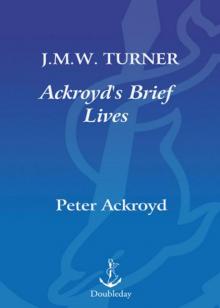 J. M. W. Turner
J. M. W. Turner Chatterton
Chatterton The Canterbury Tales – A Retelling
The Canterbury Tales – A Retelling Alfred Hitchcock
Alfred Hitchcock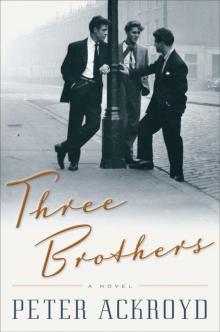 Three Brothers
Three Brothers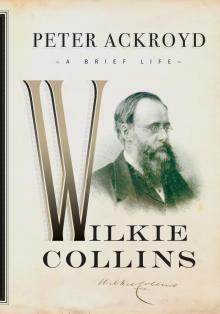 Wilkie Collins
Wilkie Collins Venice
Venice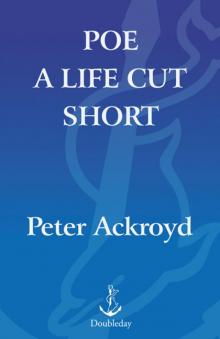 Poe
Poe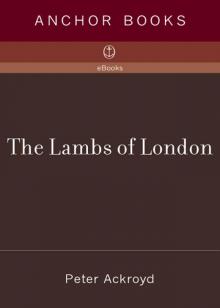 The Lambs of London
The Lambs of London London
London Queer City
Queer City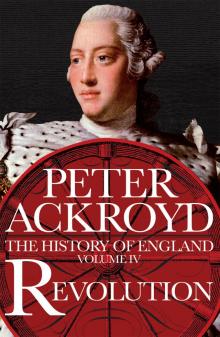 Revolution, a History of England, Volume 4
Revolution, a History of England, Volume 4 Venice: Pure City
Venice: Pure City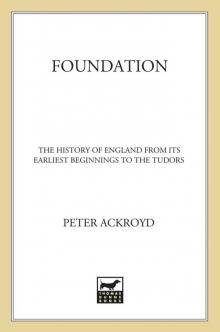 Foundation
Foundation Thames
Thames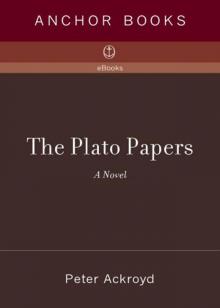 The Plato Papers
The Plato Papers The house of Doctor Dee
The house of Doctor Dee Rebellion: The History of England from James I to the Glorious Revolution
Rebellion: The History of England from James I to the Glorious Revolution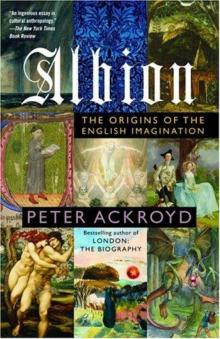 Albion: The Origins of the English Imagination
Albion: The Origins of the English Imagination The Fall of Troy
The Fall of Troy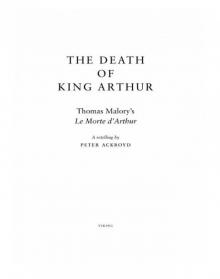 The Death of King Arthur
The Death of King Arthur The Trial of Elizabeth Cree
The Trial of Elizabeth Cree London: The Biography
London: The Biography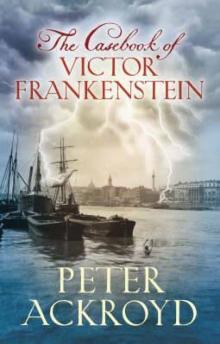 The Casebook of Victor Frankenstein
The Casebook of Victor Frankenstein Hawksmoor
Hawksmoor Charlie Chaplin
Charlie Chaplin London Under
London Under